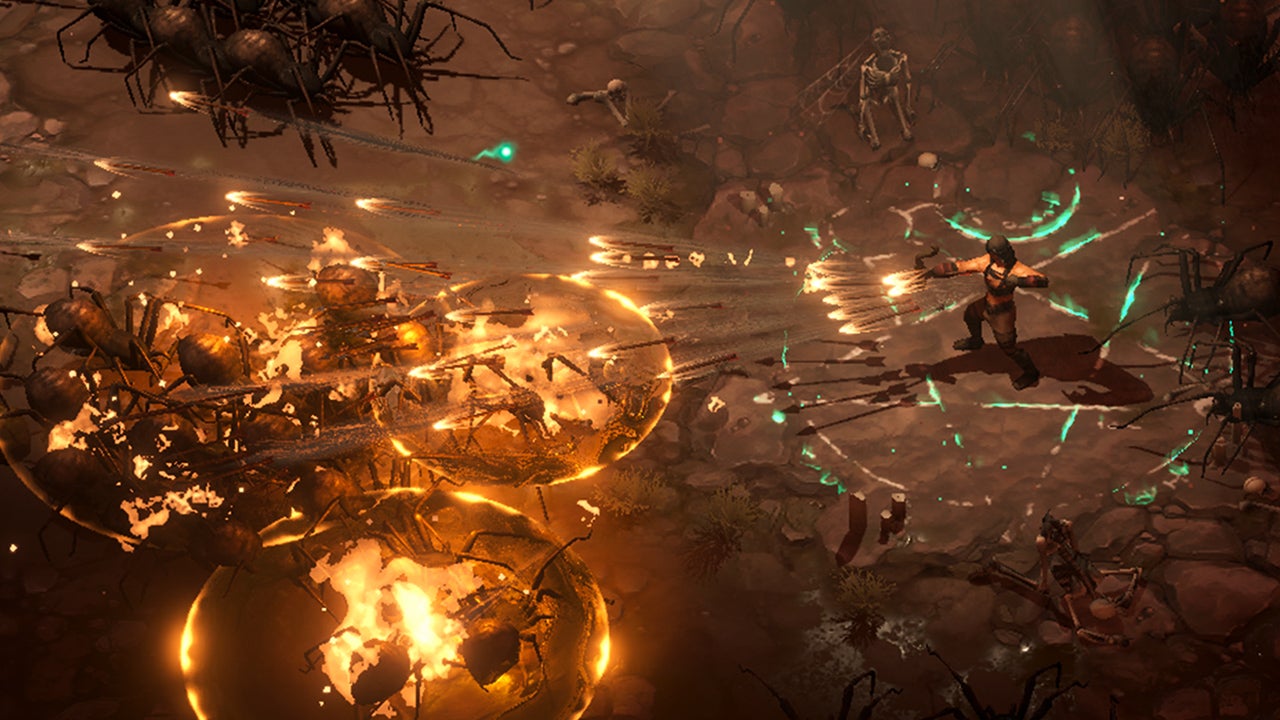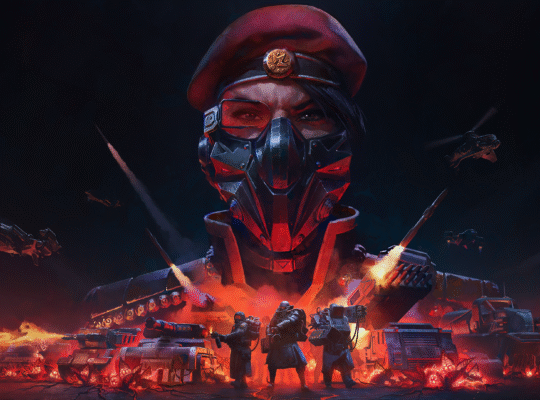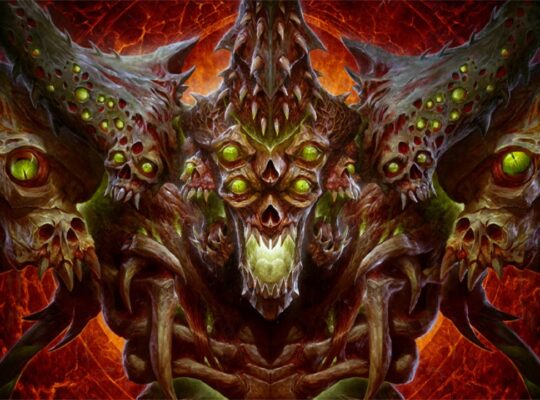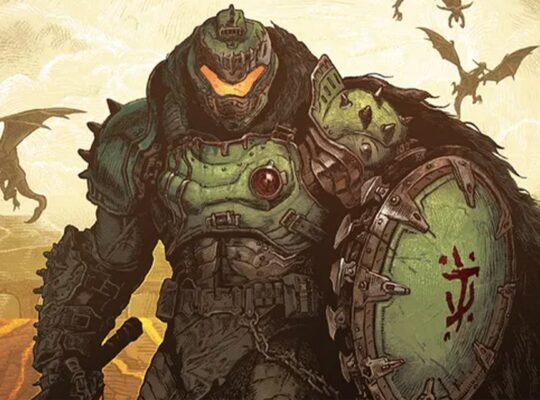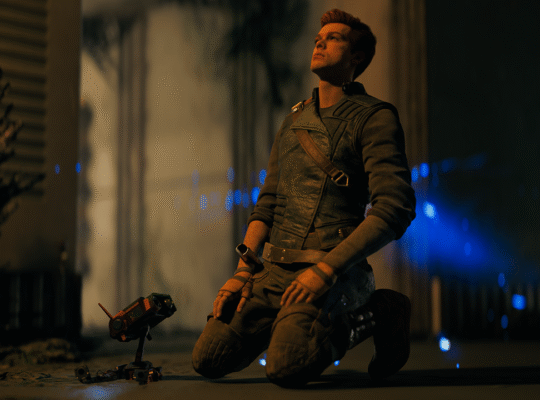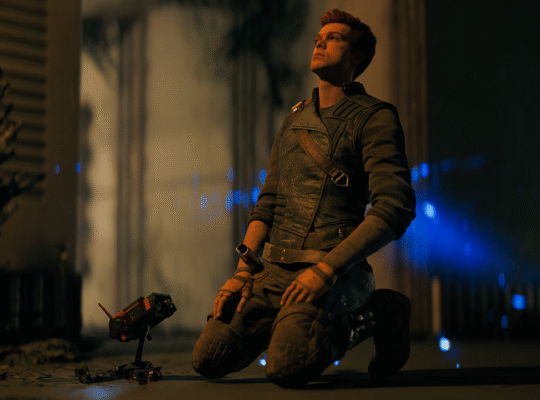
My first ritual was ended by a large man with two morningstars swinging around him in a circle. Think the hands of a clock — one short, one long — but spikier and much, much more deadly, and equally inevitable as time, at least to the novice. I was playing a Barbarian that run; I didn’t understand what I was doing yet, or how to avoid them. My dodges weren’t dodging. I’d done pretty well up until that point, but he chewed through my lives like a dog with a bone, and then I was dead, my ritual incomplete. But I’d gotten somewhere, earned some upgrades, had a better idea of what I was doing. Time to try again.
Conquest Dark is a strange beast. It clearly owes a lot to Vampire Survivors, but its inspirations don’t quit there. It’s also pulling from stuff like Conan the Barbarian — your characters look like they can bench press a car but start with little more than a loincloth — and some cosmic horror, as a treat. There isn’t much story in Conquest Dark, but the actual setup is cool. After the arrival of something called The Black Planet 237 years ago, humanity stands on the brink of annihilation. Undead armies have laid waste to the great human kingdoms. The Cosmic Gods have fallen. The Primordial Ones have awoken from their long slumber. Only Kharathia, The City of Legends, still stands, one last hope for humanity. In a last, desperate effort, people of all stripes — heroes, criminals, devotees of old gods, those seeking glory — complete Dark Rituals to summon the undead hordes and fallen heroes to gain power, hoping to use it to uncover the secrets of the Black Planet and reclaim what they can.
It’s a cool conceit, but Conquest Dark isn’t one for exposition. Most of this is delivered as text, and it’s up to you to stitch things together. You see it in the little details. The named bosses, like Lord Commander Urien, who appears outside Kharathia. Who was he before? A protector of the city, now turned against it in undeath? What about Witch Smeller Mzawi in the Shifting Sands? How do you smell witches, and what do you do if you catch a whiff of one? What happened at The Chasm of Fallen Heroes? Who was S’hes, why did she hunt Titans, and what specifically did she do to have an order of hunters named after her? What is the Black Planet? Where did it come from? I don’t know how interested in answering these questions Conquest Dark is, but every time I went to a new place, saw what was there, or learned a little bit more from a description, I was intrigued.
Dark Rituals, Big Choices
In practice, Conquest Dark is pretty simple: you go to an area on the map to start a Dark Ritual. Once you’ve selected where you want to be, it’s time to figure out who. You’ve got a trio of characters to select from, and you can reroll those options as many times as you like. You only have one race (Human) and two classes (Hunter and Barbarian) from the jump, though you’ll quickly get more. I won’t spoil the additional races, but the new classes like the agile Thief, paladin-esque Oathkeeper, and the spellcaster-flavored Acolyte of Kuu, all do exactly what they sound like.
But let’s start from, well, the start. The Hunter is faster and more nimble and naturally inclined towards bows and ranged attacks, while the Barbarian has more health and bleed resistance, and thrives up close and personal with melee weapons, but what might be more interesting are the randomly generated proficiencies they get right from the jump. An extra 5% critical hit damage, 2.5% bonus health, or 5% reduced bleed rate may not seem like a big deal, but it can define who you want your character to be, and how you upgrade later. I particularly like that you can reroll your three starting choices as much as you want, for free, or leave an area entirely at no cost if you decide this isn’t where you wanna be.
Once you’ve got your guy (or gal), the fun begins. First, you select an origin. Veteran of the War gives you Heavy Armor, Shields, and 25% Bonus Health, while Hunter’s Apprentice adds Short Bow proficiency, Survival, and 0.5 Projectile Pierce. It’s important to note that you can double-up here. If you’re playing as a Hunter, you probably shouldn’t take Hunter’s Apprentice, for instance, because you already have two of those proficiencies, but it would be great for a Barbarian that wants to play the ranged game. If you play things, right, you can essentially multi-class: Oathkeepers are already hard to kill, but it’s even more difficult when you take the Stargazer origin, which gives you the Acolyte of Kuu’s barrier. Once you’ve got an origin, the games begin. No matter who you pick, your character starts with nothing more than a loincloth and their fists. That doesn’t last long, though.
After you smack your first undead back to the afterlife, you get your first major choice: your weapon. Some of your options might not seem all that important. Take a Hunter’s opening choices. Shortbow versus longbow’s not really that crucial, right? Wrong. Shortbows shoot faster, but do less damage per shot and have less range, while longbows take a little more time to fire, but hit harder and farther. Once you’re got your killing instrument of choice, things escalate. The first few waves are small, just so you have enough time to get used to things. Like Vampire Survivors, you don’t actually control much in Conquest Dark; just where you move and when you dodge. Attacking happens automatically. Instead, your focus is almost entirely on positioning. Where to be, when to dodge, keeping track of when abilities will activate, and being in a position to capitalize on that big shot or big swing.
I Ain’t Got Time to Bleed
As you level up, you’ll make more choices. What to equip, what abilities to upgrade, when to re-roll a selection you don’t like or skip it entirely for more currency for re-rolls later. There’s a ton of build variety here. I gravitated to builds with huge critical hit damage and high crit chance with the Hunter, but the Barbarian works well with AoE damage and by increasing the chance for enemies to drop health. Picking early and specializing seems to be key.
Your real goal, aside from putting together a build that works, is staying alive as long as you can. See, you get 10 lives on each run. If you lose one, you start bleeding. The more lives you lose, the more you bleed. The first time you die, you start losing 1% of your health every second. The second time, that jumps to 2%. The third time makes it 3% and so on. There’s no way to stop bleeding once you start, but you can reduce it by speccing into health regeneration, reduced bleed rate, and how likely enemies are to drop health. Surviving long enough to complete a Ritual means staying alive after enemies cover every inch of the screen, and you start dying. The longer you can stave it off, the better, but the difference between a failed run and a successful one is how long you can hang on once things go sideways and the bosses start showing up. Like you, they have a lot of lives, and they can get pretty nasty, swinging morningstars or not. They’re tough, but if it bleeds, you can kill it. I’ve had the most success as a Hunter, Oathkeeper, and the Acolyte of Kuu (I like standing far away from things and shooting them), but I admire how different each class feels and how they forced me to approach fights in unique ways that played to their strengths.
Whether you succeed or fail (and by the way, you die regardless; even if you succeed, an army of unkillable ghosts sweeps in to ruin your day. Oops), you’re going to unlock rewards, and then it’s back to the map to spend them to help future runs. Maybe that means heading to the Stygian Archive in Kharathia, where you can not only see everything you’ve unlocked, but also upgrade individual skills, weapon sets, abilities, and so on with the Soul Coins you get on each run. Or maybe you’re off to the Altar of Power to spend crystals for increased damage, or the Altar of Toughness to take a chunk out of that pesky bleed damage, or the Altar of Souls to make sure you can collect souls (experience) from farther away. And then there’s the Factions, like the aforementioned Order of S’hes, which rewards you with buffs for all classes for slaying things as a Hunter. And then there’s the Obelisk of the Moon, where you can ramp up the difficulty of performing Rituals for increased rewards by offering up Shards of the Black Planet. Then it’s back to a Ritual. Live, die, upgrade, repeat.
Live, Die, Upgrade, Retry
Conquest Dark doesn’t stop and explain how all of this works off the bat, though there is a detailed game guide there if you want to do some light reading before you set off. Mostly, you learn by doing, and I like that. Put me in, coach, I’m ready to play, win or lose. And once you start unlocking more stuff, the wheels start turning. ‘What can I do with this class? How do I build around this thing? What if I tried taking this origin with this class? What can I do?” And once they start, they don’t really stop.
This preview’s written, Lord Commander Urien (the dude with the morningstars) has been sent on his way, and I’ve seen several hours of Conquest Dark at this point. But I also can’t stop thinking about it, either. What I might try next, how I might upgrade certain things, what classes I want to explore. The moment-to-moment gameplay here is remarkably simple. You just move and dodge (or use dodge-based abilities that can double as attacks), but there’s an elegance to it that I appreciate, and it kept me coming back with new ideas. Upgrades may be what put you over the top, but the magic happens when you step into the arena, in the moments between life and death. You’re going to die; that’s a given. The question is how far you can get (and how many horrors you can vanquish) before you do.


